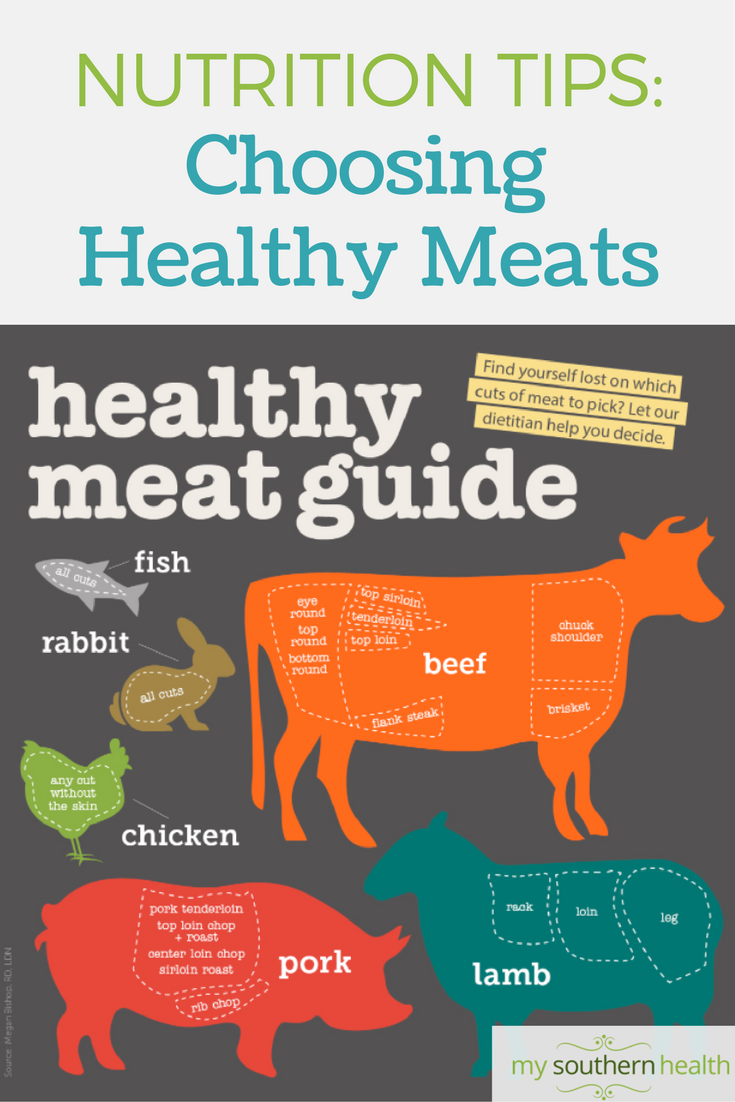Find yourself lost on which cut of meat to pick? Let our dietitian help you choose healthy meats.
There’s a lot of options at your local meat counter. But do you know which options are the healthier choice?
Megan Bishop, RD, LDN, registered dietitian at Vanderbilt Center for Surgical Weight Loss, says she would rank fish as one of the leanest and healthiest options for protein. But, she added, only 10 to 20 percent of Americans are eating the recommended two servings or 8 ounces per week.
If you’re not a fan of fish, the next healthy meat on our list is chicken, without the skin.
“It doesn’t really matter which part of the chicken you like, they are all relatively equal in terms of calorie and fat content,” Bishop says. “The rest of the options all have healthy cuts of meat, but you do need to know what to look for. For example, a pork tenderloin is a lean and healthy option, but pork sausage or ribs would contain a lot more fat.”
Bishop offers these four tips to cook your meat healthily and deliciously.
-
Avoid adding excess fat.
Cooking habits definitely play a big role in whether a your purchase counts as a healthy meat or not. Adding excess oils, butter and sauces will always increase the fat, sugar and calorie content of foods. Add just what you need to prevent sticking and to give a bit of flavor, but be stingy with your added fats and use a measuring spoon so you don’t go overboard. One tablespoon of any oil or cooking fat will add about 14 grams of fat and 120 calories to your dish. Breading and frying poultry or fish will also add fat and calories. For example, 3 ounces of roasted, skinless chicken breast contains only 3 grams of fat while the breaded, fried chicken breast with skin will have 11 grams of fat. Roasting, baking, braising, grilling, poaching or sautéing meats are all healthier options than frying them.
-
Use herbs to enhance the flavor.
Using lemon, minced garlic and/or fresh or dried herbs will enhance the flavor of many of your proteins without adding sodium (from salt). Thyme, coriander, cumin and rosemary go well with many proteins. You can also look for spice blends that are specific to certain meats at the grocery store.
-
Fill your plate with vegetables.
Protein often takes center stage when we plan our meals, but it’s important that we include vegetables and that they fill up the majority of our plate. An easy way to add lots of vegetables when grilling your meat is to use a grill basket or heavy duty foil. Cut up your favorite vegetables (i.e., zucchini, yellow squash, red onion and mushrooms), toss them in a little olive oil and add some salt, pepper and/or your favorite seasoning blend and put them right on the grill in the basket or foil. Add a baked sweet potato, and you have a delicious and healthy meal! I also love roasting vegetables in the oven because it really ups the flavor and makes things like Brussels sprouts pretty tasty (I promise).
-
Have a variety of healthy meats, seafood and poultry in your diet.
Beef will be richer in some nutrients than chicken or pork and vice versa. Plus, it adds variety and different flavors to our diet. You don’t have to only eat baked chicken breast to be healthy. There are lean options available from each of the animals listed and different ways to prepare them so that you don’t get bored.
Want more information on healthy food options? Click here to read more of our recipes and articles.


